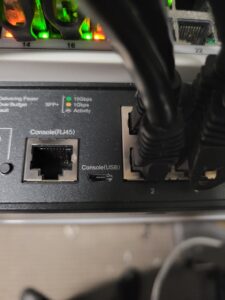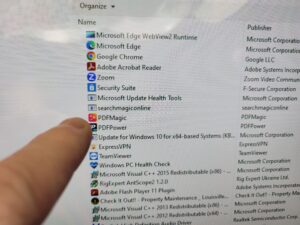 Introduction: In the era of advanced technology and increasing reliance on home networks for various tasks, encountering network issues can be frustrating. While most common network problems can be easily resolved, there are a few lesser-known culprits that may be affecting your home network performance. Take a deep dive with us as we explore ten unique factors that might be playing a role in your network troubles.
Introduction: In the era of advanced technology and increasing reliance on home networks for various tasks, encountering network issues can be frustrating. While most common network problems can be easily resolved, there are a few lesser-known culprits that may be affecting your home network performance. Take a deep dive with us as we explore ten unique factors that might be playing a role in your network troubles.
1. Aged Firmware: Outdated firmware in your router can cause compatibility issues and hinder network performance. Ensure you regularly update your router’s firmware to stay ahead of potential problems.
2. DNS Hiccups: Domain Name Server (DNS) servers play a vital role in translating websites’ domain names to IP addresses. Opting for unreliable or overloaded DNS servers might result in sluggish network speeds. Switching to reliable and fast DNS servers like Google DNS or Cloudflare DNS can help mitigate this issue.
3. Overburdened Network: An overcrowded network can impede your home network’s performance. Multiple devices simultaneously accessing the network can lead to congestion, slower speeds, and intermittent connectivity. Consider implementing Quality of Service (QoS) settings to prioritize critical devices or upgrade your internet package.
4. Sneaky Signal Interference: Unbeknownst to many, various household objects can interfere with Wi-Fi signals. Mirrors, metal objects, thick walls, and even larger appliances can disrupt signal strength. Assess your network placement and consider relocating your router to minimize interference.
5. Struggling Network Adapter: Outdated or malfunctioning network adapters can lead to poor network connectivity and speed. Ensure your devices are equipped with up-to-date and compatible network adapters to prevent this bottleneck.
6. Invasive Malware: Malware isn’t limited to affecting computers; it can also target routers. Malicious code injected into routers can compromise network security, degrade performance, and even redirect your internet traffic. Regularly update your router’s firmware, change default login credentials, and install reputable security software to ward off potential malware threats.
7. Unoptimized Wi-Fi Channels: Interference from neighboring wireless networks can slow down your Wi-Fi speeds. Using tools like Wi-Fi analyzers, identify the least congested channels and switch your Wi-Fi router to an optimized channel for improved performance.
8. Weather Woes: Extreme weather conditions such as heavy rain, intense lightning storms, or severe winds can physically damage or disrupt network equipment, leading to intermittent or complete network outages. Safeguard your networking equipment by ensuring proper insulation and protection from the elements.
9. Cryptic Cable Faults: Damaged or frayed network cables can cause connectivity issues. Ensure all cables are securely connected, properly insulated, and free from physical damage to maintain a reliable network connection.
10. Resource-Hungry Background Apps: Often overlooked, resource-intensive background applications on your devices can consume a significant portion of your network’s bandwidth, leading to slower internet speeds for other devices. Monitor and manage these apps, limiting their impact on your network performance.
Conclusion: Network issues can stem from various unexpected factors. By understanding the less common culprits affecting your home network, you can troubleshoot more effectively and address these issues proactively. Remain vigilant, keep your devices updated, and make informed decisions to ensure a stable and optimized home network experience.
Monthly Archives: August 2023
Shielding Your System: Three Effective Ways to Ward off Computer Viruses
 Computer viruses present a persistent threat to our digital lives, capable of wreaking havoc on our devices and compromising our valuable data. To safeguard your system, it’s crucial to adopt effective preventive practices. In this article, we highlight three practical ways to avoid computer viruses, ensuring a safe and secure computing experience.
Computer viruses present a persistent threat to our digital lives, capable of wreaking havoc on our devices and compromising our valuable data. To safeguard your system, it’s crucial to adopt effective preventive practices. In this article, we highlight three practical ways to avoid computer viruses, ensuring a safe and secure computing experience.
1. Exercise Internet Savviness: Safe browsing practices play a pivotal role in fending off viruses. When accessing the Internet, exercise caution and adhere to the following guidelines: a) Be Vigilant With Downloads: Be cautious when downloading files or software, particularly from unfamiliar websites or unsolicited email attachments. Verify the legitimacy of the sources and place trust solely in reputable platforms. Avoid clicking on tempting pop-up ads or suspicious links that may direct you to potentially infected websites. b) Be Wary of Phishing Attempts: Cybercriminals often exploit phishing techniques to trick users into unknowingly downloading viruses or sharing sensitive information. Always scrutinize emails or messages asking for personal details or financial information. Legitimate organizations rarely request such information through unsolicited emails. Be skeptical of suspicious email addresses, grammatical mistakes, or unexpected urgency in the message.
2. Update Software Regularly: Ensure your Windows Operating System, web browsers, and other software are up to date with the latest security patches and bug fixes. These updates often contain critical security enhancements that protect against newly discovered vulnerabilities, reducing the risk of infection. Although these updates are often supposed to update automatically often times they do not. Learn how to manually check for Windows up
3. Practice Smart Data Backup Regimes: Data Backups provide an additional layer of protection against computer viruses. While they don’t prevent infection a data backup makes it easy to recovery from an infection that requires a complete OS Installation on your computer. Follow these best practices to reduce vulnerability: a) Regular Data Backup: Create backups of your essential files and folders periodically. Use external hard drives or flash drives for these backups. In the event of a virus attack or system compromise, having a recent backup ensures data recovery and minimizes potential loss..
Conclusion: By following these three practical ideas exercising internet savviness, updating software and practicing smart data backups- you can significantly reduce the risk of falling victim to computer viruses catastrophes. Remain proactive and vigilant in your cybersecurity efforts to safeguard your system and ensure a secure computing experience.


